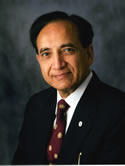| Abstract: |
BACKGROUND. The current study reviews the authors' recent institutional experience in the treatment of osteosarcoma of the head and neck (OSHN). METHODS. The clinical records of 44 patients who were treated between 1981 and 1998 for OSHN were reviewed retrospectively. Archived histologic material was reviewed and data were analyzed to identify factors predictive of disease control and survival. Outcomes were compared with a previously reported historic cohort treated at the study institution. RESULTS. Patients ranged in age from 6 to 64 years (median, 31 years). The mandible was the primary site in 18 patients (41%), the maxilla in 20 patients (45%), and the skull in 6 patients (14%). Surgery was employed in all 44 patients, neoadjuvant chemotherapy was administered in 30 patients (68%), and postoperative radiation therapy was given to 7 patients (16%). The surgical excision margins were positive in 13 patients (30%). High-grade lesions were reported in 50% patients and low-grade lesions were noted in 18% of patients (grade was not assessable in 32%). Histologic response was "unfavorable" in 22 of 30 patients (73%) who were treated with neoadjuvant chemotherapy. The 3-year overall, disease-specific, and recurrence-free survival rates were approximately 81%, 81%, and 73%, respectively (median follow-up of 41 months). Positive surgical margins were found to be the only significant predictor of worse disease-specific survival. Compared with the historical cohort, the current experience demonstrated an obvious improvement in the 5-year local control (35% vs. 78%), distant metastases (37% vs. 13%), and overall survival (23% vs. 70%). CONCLUSIONS. Negative surgical margins were found to be the only significant predictor of overall and disease-specific survival. The results of the current study represent a considerable improvement over the authors' previously published experience and compare favorably with the results reported in the literature. © 2002 American Cancer Society. |












